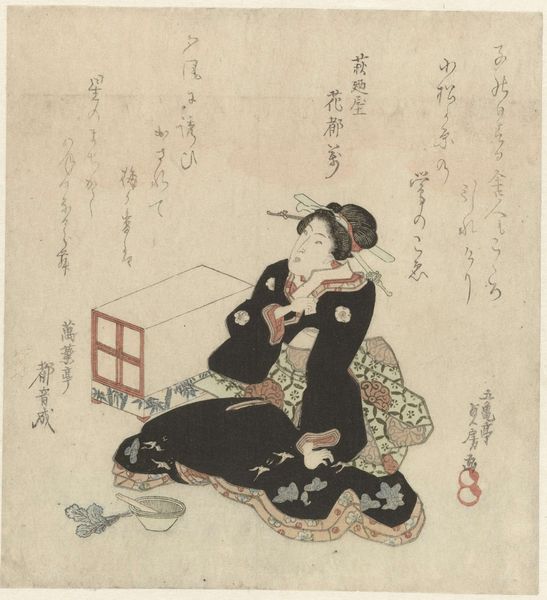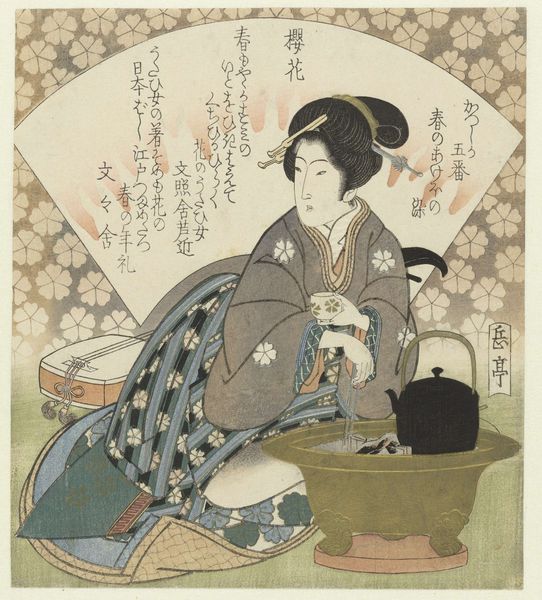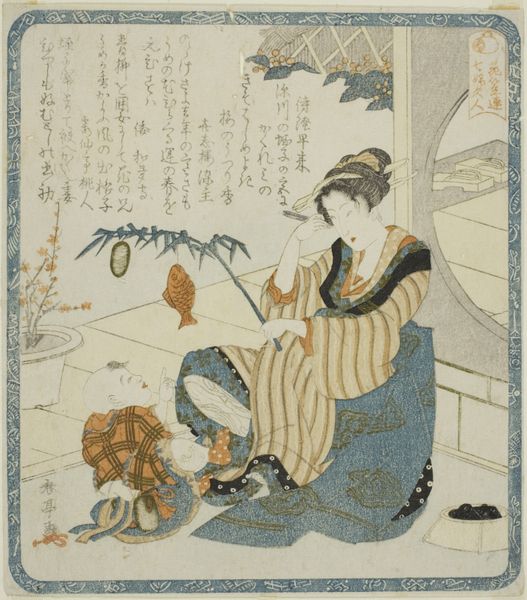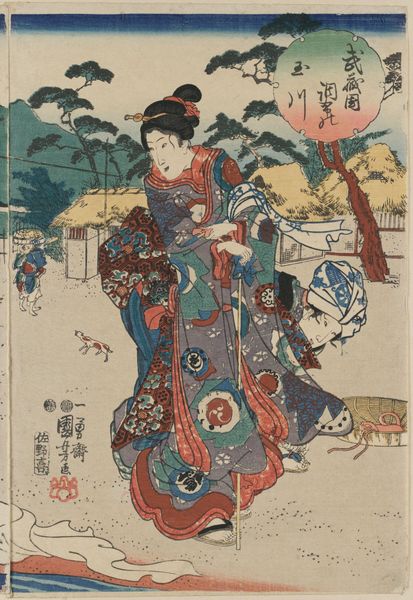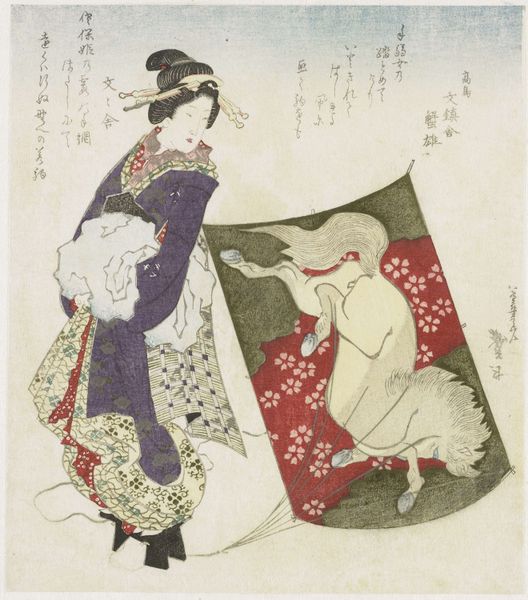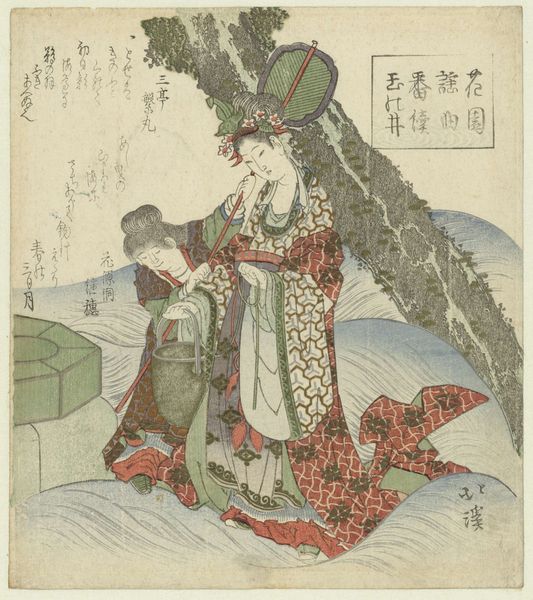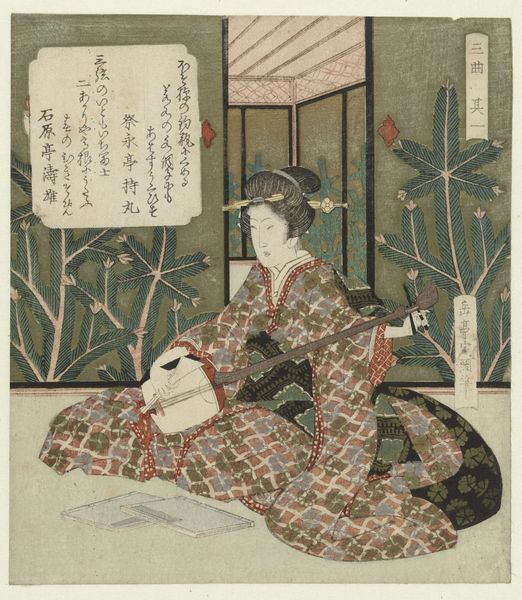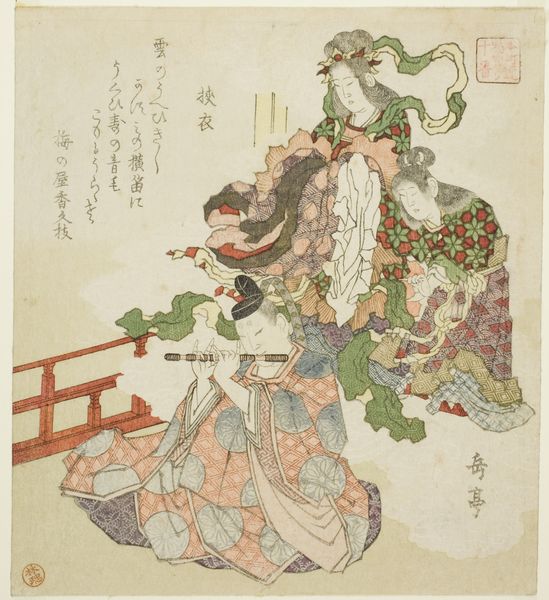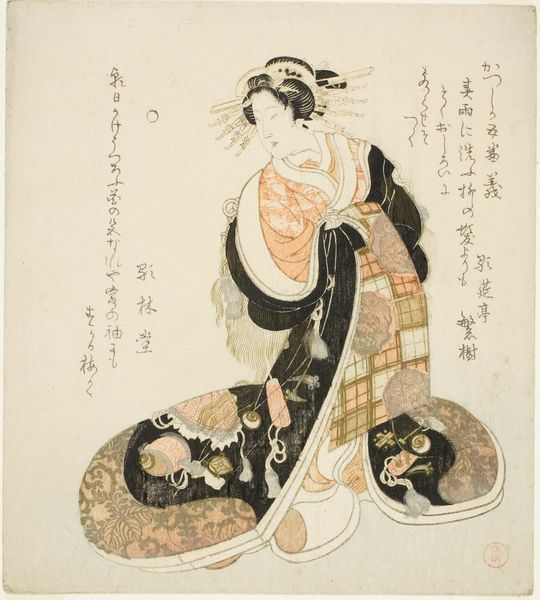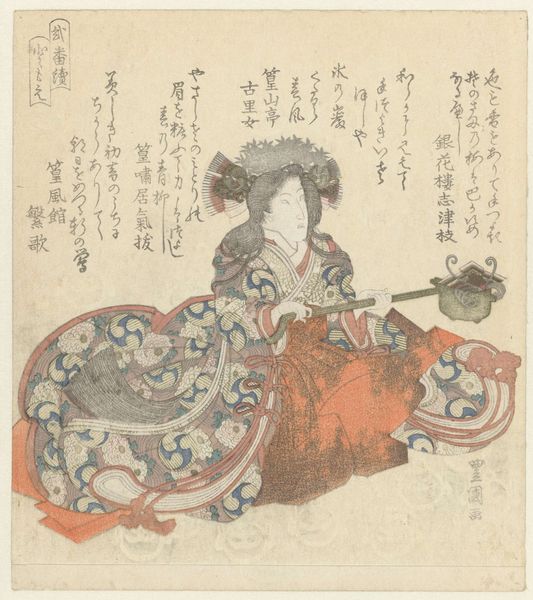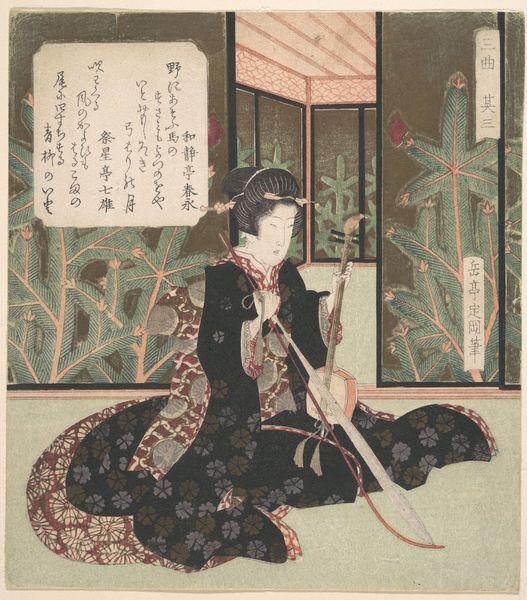
Snake (Mi), from the series "Parody of the Twelve Signs of the Zodiac (Mitate juni shi)" c. early 19th century
0:00
0:00
print, woodblock-print
#
water colours
# print
#
asian-art
#
ukiyo-e
#
figuration
#
woodblock-print
#
genre-painting
Dimensions: 14.6 × 19.1 cm
Copyright: Public Domain
Editor: Here we have "Snake (Mi), from the series 'Parody of the Twelve Signs of the Zodiac (Mitate juni shi)'", a woodblock print created around the early 19th century by Hotei Gosei. I’m really drawn to how the figures interact—there's a clear sense of social hierarchy on display. What strikes you most about this piece? Curator: It’s fascinating to see how Hotei Gosei uses the zodiac parody as a lens for social commentary. Consider the Edo period context – a rigid class structure, growing merchant class, and elaborate entertainment districts. How do you think this print might be commenting on those dynamics? Editor: Well, you have the courtesan figure, quite elevated and aloof. Then there's the man crawling with what appears to be the "snake", almost subservient. The tiny, playful dog feels like a wild card, maybe representing disruption or commentary on the scene? Curator: Precisely! Notice how the composition directs our gaze from the elegant courtesan to the crawling figure. The dog disrupts this power dynamic, drawing the viewer’s eye to a smaller narrative playing out. Given the Ukiyo-e tradition's focus on the floating world and everyday life, what message could this print send to its contemporary audience about social mobility and representation? Editor: So it’s more than just a zodiac parody; it uses humor to cleverly point to tensions and expectations within the society. It kind of humanizes it with some light and dark too. Curator: Exactly. Ukiyo-e often navigated social commentary through clever visual metaphors and allusions, and by linking it to popular culture of the time, specifically astrology and courtesans, this print engages the viewer in contemplating their place within society’s complex structure. I wonder how audiences interpreted its cultural significance and humor then? Editor: This really reframes how I viewed Ukiyo-e. Thanks for that extra context. I hadn't really considered how such pieces could participate in these social discussions. Curator: Absolutely. And perhaps its continued presence in collections allows new audiences to reconsider historic and contemporary hierarchies and commentaries.
Comments
No comments
Be the first to comment and join the conversation on the ultimate creative platform.

